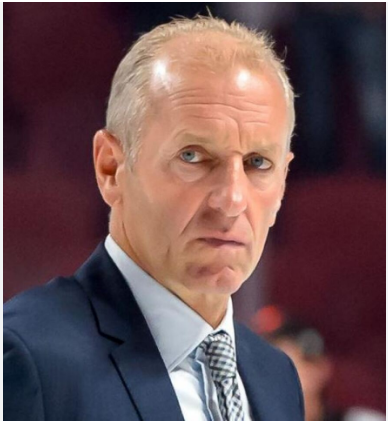The Buffalo Sabres will inevitably need to create roster space in order to use the youthful talent they have in their prospect pool as they continue to develop as a team and as individuals. Jeff Skinner is the guy at the top of both of those rankings. This means cutting both of the older players and the cap cost that goes along with them. This is merely a straightforward method of creating cap space; it has nothing to do with Skinner’s bad play or attempts to dump him off on another club in order to get rid of him
to give long-term contracts to young players like JJ Peterka and Jack Quinn, enabling them to advance through the squad as necessary.
Since the conclusion of Ralph Krueger’s career, Skinner has been a consistent threat to score goals. He gained fresh energy and confidence from playing for Don Granato, which has helped him become into the goal scorer he is now. Because of this, his trade value is at its best point in years. Now is the time to take advantage of this, so the Sabres can give their young players on the roster an opportunity to advance, and their

prospects in the lower and junior leagues to potentially play in the NHL. Moving someone like Skinner would present the ideal chance for someone like Jiri Kulich to step in and demonstrate his ability to be an NHL scoring player if Kevyn Adams decides not to move any of the prospects.
The current value of Skinner
Moving Skinner in a trade may prove to be a challenging endeavor. He has a $9 million cap hit as of right now, and his deal ends in July 2027. In addition, his contract has a complete No Movement Clause (NMC), which he would have to waive in order for a trade to proceed. It would be unlikely that they would receive the best components back in return for Skinner, but they may still receive enough
value from him, enough that a different team might be open to splitting his deal in part. Skinner would only actually waive his NMC to join a playoff club in the most likely trade scenario, and the Sabres’ partial salary retention would be the only option for a playoff team to take on three more years of Skinner’s deal.
The Sabres can keep up to half of his $9 million hit since they have salary space, which would result in a far better return for him. The goal of the Sabres’ move would not be to acquire a player who would be a suitable replacement; rather, they would be seeking to acquire more draft capital that they could utilize or trade, or even a player who could be added to the roster to temporarily bring depth and leadership to this young team.
Given his impressive 2022–23 season total of 82 points and his current pace of scoring 30 goals or more in 2023–24, many playoff clubs would be willing to pay $4.5 million to add Skinner to their starting lineup.
Who Takes Skinner’s Place?
The easiest response to this query is Peterka, the rising star. This season, he has been unstoppable, leading the squad in goals with 18. He had a strong debut year in 2022–2023; however, this season he has nearly quadrupled his output figures. He played in 77 games during his rookie campaign, recording 12 goals, 20 assists, 32 points, a minus-15, 125 shots, and a 9.6 shooting %. This season, in 49 games, he has posted 18
34 points, 133 shots, a plus-6, goals, 16 assists, and a 13.5 shooting %. He will be a player with more than 60 points and 30 goals scored if he keeps up this rate. He is the ideal alternative for Skinner and will probably cost less when his next contract is signed, especially because he is ten years younger than the player.
Kulich, the Sabres’ top current prospect, would be the second choice. He deserves an opportunity to demonstrate his abilities at the NHL level after having such an amazing year with the Rochester Americans and the World Juniors. With 30 games played, he has 16 goals and 24 points thus far. The Sabres might make advantage of this potential both this season and the next. Though his production on the power play would be highly appealing to the Sabres, his ability to be in an open shooting position and finish opportunities in a myriad of ways would help the Sabres score more goals overall.
It’s Important to Move Skinner at the Correct Time.
The Sabres are under no need to sell Skinner by the trade deadline, but it would be ideal to do so if they are unable to secure a postseason spot before then. In the event that Skinner is available at the deadline and clubs are ready to invest draft money on him, it would be best to move him on that day. It would be preferable for the Sabres to hold Skinner for the playoffs if they have somehow managed to make a run at the playoffs. Then, at the draft, when clubs could have greater budget flexibility, they could deal Skinner.
Moving past Skinner is just a sign of progress rather than an indication of a rebuild. It’s usually ideal to let rid of a 31-year-old forward to make room for younger players who can replace him more affordably. Even while it would be unfortunate if Skinner left Buffalo without experiencing even one postseason run, the Sabres should make advantage of the cash they saved and the roster space they created by dealing Skinner. The Sabres need all the support they can get right now, but I’m good with it if trading a talent like Skinner allows them more room to develop and improve.

